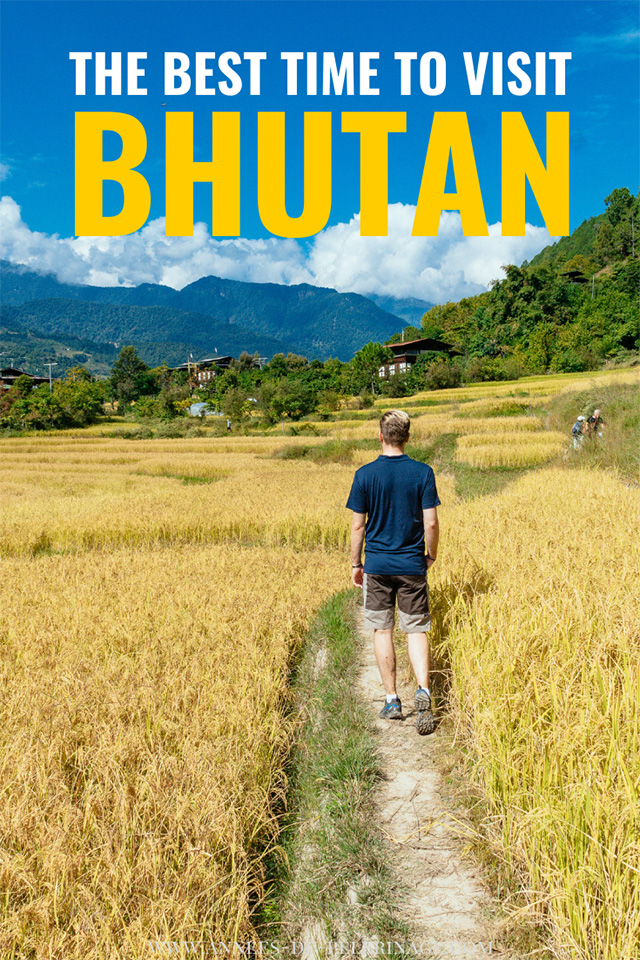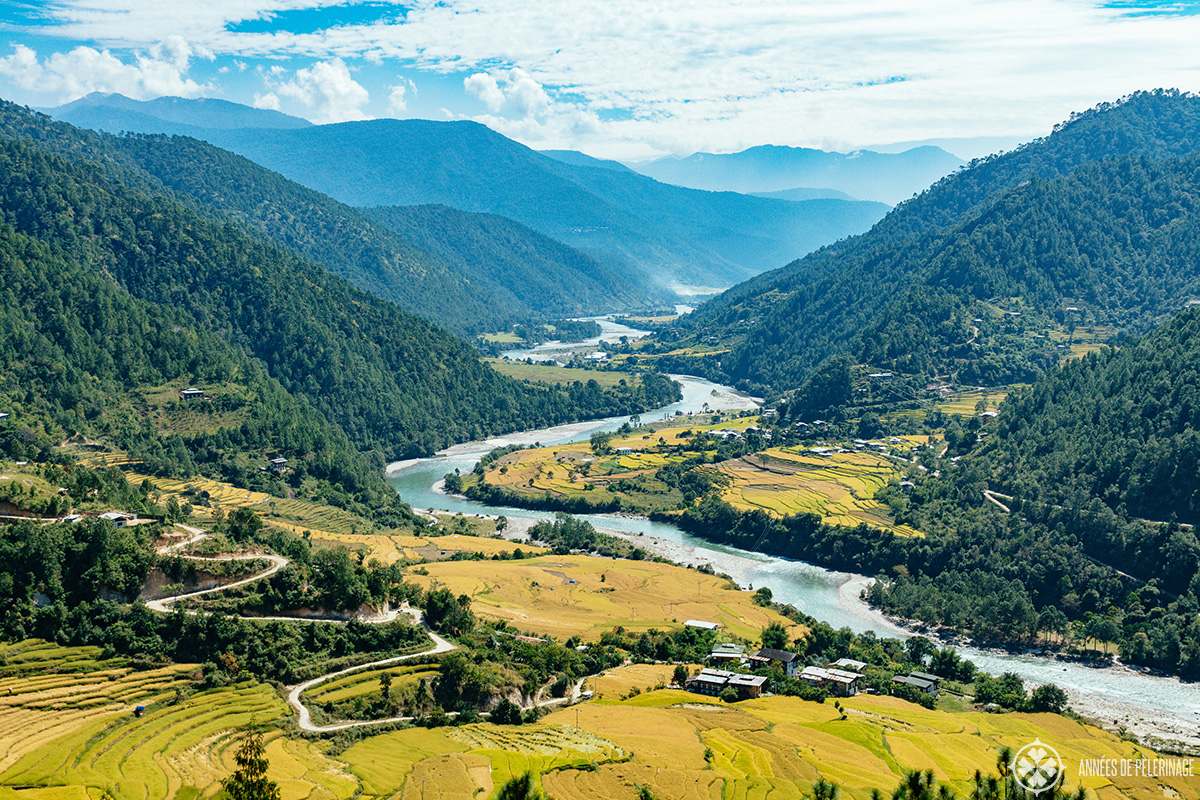
Are you planning to visit the Thunder Dragon Kingdom? But now you are wondering about the best time to visit Bhutan?
Well, then this travel guide was written for you. Before my first visit to Bhutan, I was facing the exact same question you might be facing right now. The secluded kingdom is expensive and when you are committing so much money to get to Bhutan, you want to get it right, eh?
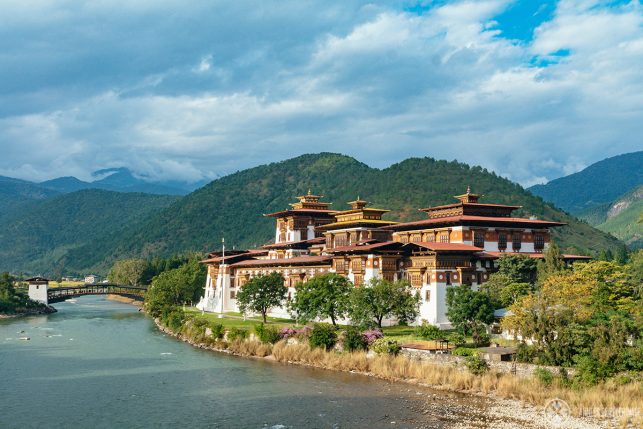
Now after all the research I did, plus some first-hand experiences, I can tell you that Bhutan will probably be beautiful no matter when you visit. The pristine culture, the amazing landscape, and the delicious food will be there no matter when you are visiting (check out the best places to visit in Bhutan here). But there are some months where you can see specific things on top of the usual grandeur!
Here is everything you need to know about the best time to visit Bhutan
Bhutan weather & climate
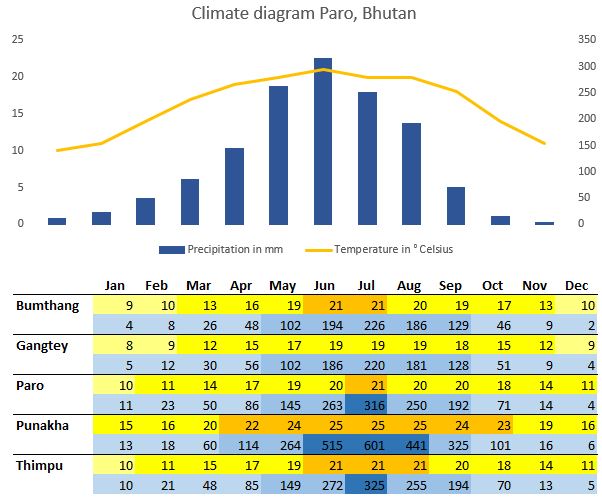
Let’s talk about the weather first, because that is probably what will govern your choice most. Bhutan’s climate can be divided into three-zone. The lower plains, the central region, and the high mountains. 99% of all Bhutan itineraries won’t cover either the plains or mountains above 4,000 meters, so you can more or less ignore the weather patterns in these areas.
The central regions, meaning anything that is between Paro and Bumthang, will be what you need to be concerned about. Here are two important cornerstones of the central Bhutan climate:
- The rainy season roughly starts in June and ends towards the mid of September. The higher you go, the less pronounced this will be.
- Snow is possible between December and March, though rather infrequent – it’s the driest time of the year.
Both heavy rainfalls and snow can lead to closed roads and delayed flights, which is why most people will want to avoid the winter months and summer.
Other than that, the weather in Bhutan will be favorably warm most of the time. It is located on the same latitude as Florida, so despite the high altitudes, you can expect temperatures around 20° Celsius / 68° Fahrenheit in spring and autumn. It will cool down considerably in the evening on a rainy day or even in the shade.
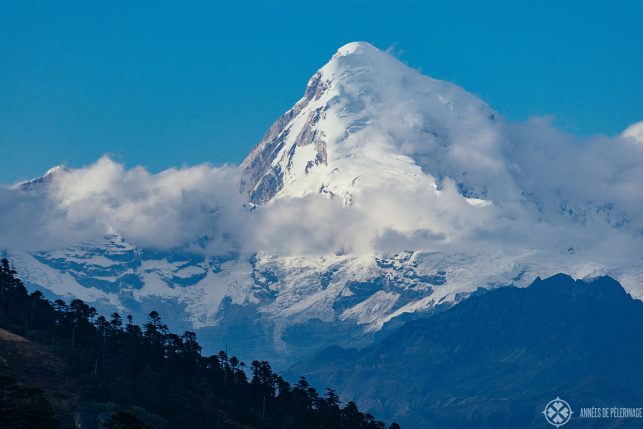
Rain is possible throughout the year, and that is certainly something you have to plan for. Generally speaking, the sky will be clearer towards the end of the year and many people enjoy seeing the white-capped peaks of the Himalaya.
If you want to do some serious trekking, then this will not be possible in winter as a lot of mountain passes will be closed then. October and early November will be your best shot. Despite the cold, the weather will be the most stable then.
Five important seasonalities you should be aware of when you visit Bhutan
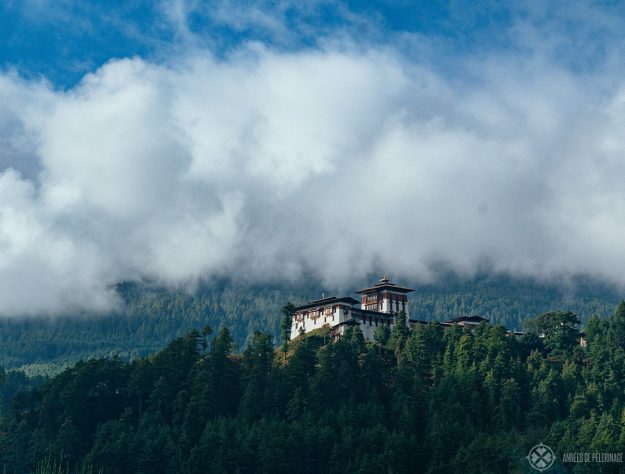
1. Black-necked cranes: Most tourists visit Gangtey to see these beautiful birds. They are no residents, though. The endangered bird only migrates from Tibet to Phobjikha Valley at the beginning of November (sometimes earlier) and will leave in early February. If you want to see these beauties, don’t visit in September ;-)
2. Rhododendron bloom: The high altitudes of Bhutan’s mountains are covered almost complete with rhododendrons – some of them really ancient. They will bloom in late spring – so March to May.
3. Festival seasons: Most festivals are either in spring or autumn (see below). There are almost no festivals in summer or winter.
4. Rainy season: In Thimpu, the rainy season starts in May and ends in September. Punakha is lower and thus the rains are even more pronounced with up to 600mm of rain in July!
5. Dry winters: There is almost no precipitation between November and February. If you want to get a clear shot of the Himalaya, then this is the ideal time.
When is the best time to visit Bhutan for Safaris? There is a wonderful National Park in the South where you can see Tigers, Leopards, Red Pandas (well theoretically) and the like. The Royal Manas National Park is huge and you should definitely contact a safari specialist about your preferences. Considering the dense foilage, autumn months are usually better to see the wildlife.
What is the best month to visit Bhutan?
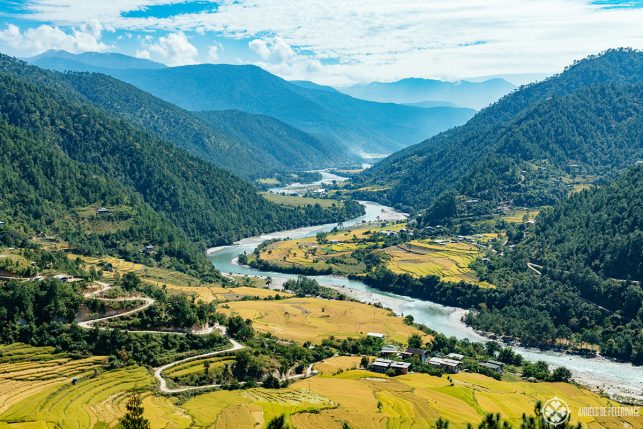
The overall best month to visit Bhutan is probably the second half of September. It’s a combination of increasingly favorable weather conditions and a lot of festivals (Thimphu Festival, Gangtey, etc) happening. It’s also the start of the tourist season when Bhutan is the busiest.
80% of all international travelers will visit Bhutan in October, though. October is slightly cooler than September, but also considerably drier. It will be the most expensive season of the year to visit. You will also be able to see the golden yellow rice fields before the harvest.
But do not discount April: You will be able to see the valley in full bloom AND have less of a crowd (though even in October the maximum I ever saw was two buses in a monastery in Bumthang). Prices are usually a bit lower as well.
November will give you the opportunity to see the black-necked cranes, but it will be quite cold already. If you don’t mind that, this might be an excellent choice for wildlife photographers. March, will be just as cold, but you will see the first flowers blooming already.
Festivals in Bhutan
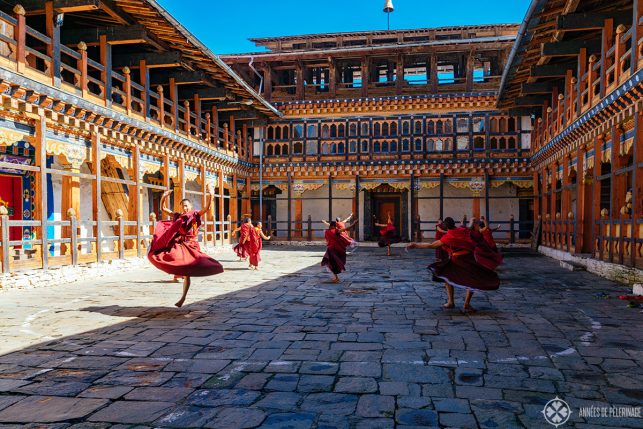
Bhutan is known for its many colorful festivals. Buddhism is big in the country and the locals like to celebrate. Almost every major city has a colorful festival at least once a year. And there are quite a lot of tourists who travel to Bhutan specifically to see one of these festivals. Here are the dates for each of them (roughly, as they change from year to year):
- Punakha Tsechu: 5-7 March
- Paro Festival: 4-8 April
- Ura Festival Bumthang: 4-8 May
- Thimphu Drupchen: 22 September
- Wangdi Festival: 24 – 26 September
- Thimphu Festival: 26-28 September
- Tamshingphala Choepa Bumthang: 26-28 September
- Gangtey Festival: 28 September – 1 October
- Tangbi Mani Bumthang: 29 September – 2 October
- Jambay Lhakhang Drup Bumthang: 31 October – 3 November
There are quite a lot of other, smaller festivals, but most tourists won’t even visit these towns, so I didn’t list them. Please contact your tour agencies before you book to confirm these dates as they may change. Also, be aware that you will have to book your accommodation quite a bit in advance as these festivals are a major tourist magnet. I did the Bhutan tour with Amankora (so, click to read my review).
Is it good to visit Bhutan in winter?
It is perfectly okay to visit Bhutan in winter if you just want to visit the lower valleys of Paro, Thimphu, and Punakha. Here the winters are fairly mild and snow is very infrequent and seldom lasts more than a day. Since the weather is usually very clear, you will have no problems at Paro Airport either.
Prices will be a bit cheaper during that time (the tourist fee is only 200 USD per day and person in winter), but you should definitely bring warm clothing. The higher valleys and passes might be inaccessible, but you can always take the plane to Bumthang.
The best stop-over destinations for Bhutan
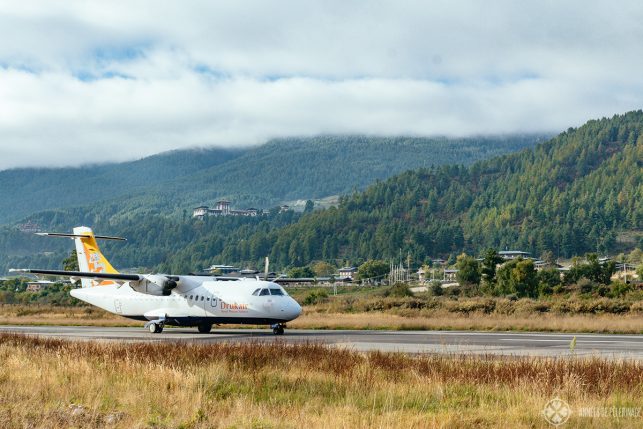
There is one more thing you might want to consider. There are no direct flights to Bhutan from Europe or America. Which means most travelers will have to include one or possibly even two or three stops along the way. I wrote a detailed guide on how to get to Bhutan here which you really should check out.
The three most popular routes are Delhi, Bangkok, and Kathmandu. A lot of travelers decide to stay a night or even more in these cities. You should definitely factor that in as well. You don’t want to be in Delhi during the Monsoon (late June until mid-September). And visiting Bangkok in September or October (equally heavy rains) might not be the smartest move either.
Personally, I picked Delhi as my stop-over destination (you can read about it here). I feel it’s the city that has to offer the most and you could possibly even stay one more day to see the famous Taj Mahal in Agra (3hours drive).
So, this was my little travel guide about the best time to visit Bhutan. Hope I was able to give you a good overview. Leave a comment in case you got any questions.
